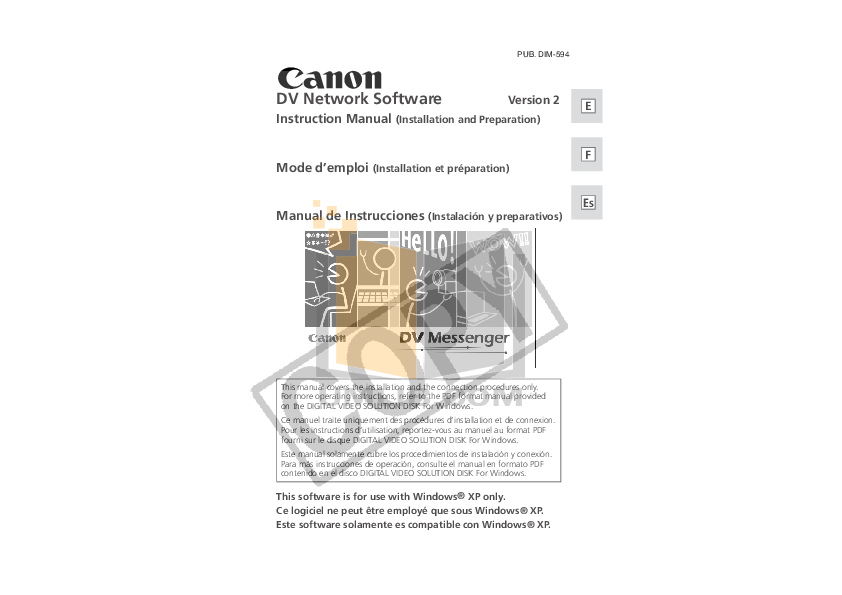Descargar Manual De Instalacion De Windows Xp En Pdf

Exceptional productivity and versatility. You'll be amazed at what you can do with one compact machine: Print high-quality photos and text. Copy documents. Scan photos and other images. And with the direct print card slot, you can print photos direct from select memory cards! 1 Also included is a powerful software suite. View and Download Imation Link user manual online. Wireless A/V Extender. Link Extender pdf manual download.
Three Parts: Windows XP is one of Microsoft’s most popular operating systems, and though it’s starting to show its age, many people still use it exclusively. Whether you’ve got an old computer that you want to get functioning again or you want to install XP on your new machine, it will only take a short while. • Note: Microsoft is no longer supporting Windows XP, which means it will no longer receive essential security fixes. It is highly recommended that you consider upgrading to a newer version of Windows, such as,,.
Ensure that your computer can run Windows XP. Your computer will need to meet or exceed the minimum system requirements in order to run Windows XP. Civ V Firetuner Download Movies. You can find your system information by either checking the computer manufacturer's manual, or by running DirectX Diagnostic on an existing Windows operating system of the computer. • To start the DirectX Diagnostic, open the Run dialog (press WinKey+R simultaneously), type dxdiag, and click OK. • Minimum System Requirements • 300 MHz Intel or AMD CPU • 128 megabytes (MB) of system RAM • 1.5 gigabytes (GB) of available drive space • Super VGA (800x600) or higher display adapter • CD or DVD-ROM • Keyboard and mouse, or other pointing devices • Network Interface Adapter required for Internet and Network Connectivity • Sound card and speakers or headphones. Statistische Methoden Der Vwl Und Bwl Ebook Reader.
Set your computer to boot from CD/DVD. Before inserting the CD, you'll need to set your computer to boot from a CD instead of from the hard drive.
This will allow you to load the Windows XP setup files before your computer boots to its installed operating system. You can change the boot order from the BOOT menu in your.
• To enter the BIOS of your computer, you usually press F9 or DEL when your computer starts or notifies you that you can enter 'setup'. Click the green 'BIOS' link for more information. • In the BOOT menu, set the order so that your CD/DVD-ROM drive is set as the 1st Boot Device. • If you are installing Windows XP from a USB drive, make sure that the USB drive is set as the 1st Boot Device.
You may need to have the USB drive inserted for it to appear as an option. Select the partition you want to install on. You will see a list of available partitions on your installed hard drives. If you are installing Windows XP on a new hard drive, you should see only one entry labeled 'Unpartitioned space.' If you have a previous version of Windows or Linux installed on your computer, you will potentially have multiple partitions. • Installing Windows XP will erase all of the data on the partition that you choose. Select a partition that is empty or that contains data that you do not care to lose.
• You can delete your partitions with the “D” key. This will return them to “Unpartitioned space”. Any data on the partition will be lost when it is deleted. Create a new partition. Select the Unpartitioned space and press “C”.
This will open a new screen where you can set the partition’s size from the available space. Enter the size in megabytes (MB) for the new partition and then press ENTER. • By default, the partition will be set to the maximum amount of available space. Unless you plan on creating multiple partitions, you can usually leave this at its default. • Windows XP requires at least 1.5 gigabytes (1536 MB) for its installation files, but you will want more than this for programs, documents, downloads, and other files. 5 gigabytes (5120 MB) is a good baseline amount for Windows XP, with more if you plan on installing a lot of programs.
• You can create multiple partitions on a single drive. This can allow you to separate your programs from your movies and music, or to install another operating system. Windows XP can only be installed on one discrete partition.